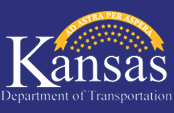ESTABLISHING SPEED LIMITS a case of "MAJORITY RULE"Speed zoning is the establishment of reasonable and safe speed limits based on an engineering study. This summary tells what realistic speed limits will do, what they won’t do, and how they are established. WHY SPEED LIMITS?Since most citizens can be relied upon to behave in a reasonable manner as they go about their daily activities, many of our laws reflect observations of the way reasonable people behave under most circumstances. Generally speaking, traffic laws that reflect the behavior of the majority of motorists are found to be successful, while laws that arbitrarily restrict the majority of motorists encourage violations, lack public support, and usually fail to bring about desirable changes in driving behavior. This is especially true of speed zoning. Speed zoning is based upon several fundamental concepts deeply rooted in our American system of government and law:
COMMON MISCONCEPTIONSThe public normally accepts the concepts noted in the previous section. However, the same public when emotionally aroused in a specific instance, will often reject these fundamentals and rely instead on more comfortable and widely held misconceptions, such as:
Contrary to popular belief, speed in itself is not a major cause of accidents. In fact, accidents appear to depend less on absolute speed and more on the variation of speeds in the traffic stream. INTENT OF SPEED ZONINGThe basic intent of speed zoning is to identify a safe and reasonable limit for a given road section. The most widely accepted method is to set the limit at the speed which 85 percent of the traffic is moving at or below. This reflects the safe speed as determined by a large majority of the drivers. Research has shown that the 85th percentile speed is the speed where accident involvement is the lowest. Reducing the speed limit below that which is warranted can actually be detrimental to safety. HOW SPEED LIMITS ARE ESTABLISHED:Kansas Statutes, Section 8-1559 allows the establishment of speed limits on the State Highway System “upon the basis of an engineering and traffic investigation.” Speed zoning in Kansas is based on the widely accepted principle of setting speed limits as near as practicable to the speed at or below which 85 percent of the drivers are traveling. According to a Federal Highway Administration study, all states and most local agencies use the 85th percentile speed of free flowing traffic as the basic factor in establishing speed limits. This speed is subject to revision based upon such factors as: crash experience, roadway geometries, parking, pedestrians, curves, adjacent development, and engineering judgment. This practice is in accordance with the Manual on Uniform Traffic Control Devices which has been adopted by the State of Kansas. HOW SPEED DATA IS COLLECTEDRadar is used to collect speed data from random vehicles on a given roadway. Off peak hours are normally used in conducting a spot speed study with the speed of approximately 50 free flowing vehicles in each direction obtained. On low volume roads where it would be difficult to obtain a sample of 100 vehicles, the study may be terminated after a study period of one hour. Vehicles are selected at random from the free flow of the traffic stream to avoid bias in the results. ENGINEERING JUDGMENT:Probably one of the most important factors in a speed study, but the one most difficult to define, is engineering judgment. No matter how complete policies and guidelines are, there will always be speed studies with peculiarities requiring engineering judgment. Sometimes, the decision to raise or lower a speed limit in a certain area may have to be based on the traffic investigator’s own personal judgment. In some remote areas, where there is insufficient traffic for a valid speed sample, traffic engineers may have to base their decision on the impression obtained from driving the speed study area. In the final analysis, it is the judgment of the traffic engineer that determines which, if any, of the factors in the speed study warrant a downward adjustment of the 85th percentile speeds. After all variables are considered and a speed limit is established, traffic should flow at a safe and efficient level. WHAT REALISTIC SPEED LIMITS DO:Realistic speed limits are of public importance for a variety of reasons:
WHAT UNREALISTIC SPEED LIMITS DO:Unrealistic speed limits are also of public importance for the following reasons:
|
- home
- Traveler Information
- Doing Business
- PERMITS
- BIDDING & LETTING
- COMMERCIAL VEHICLE
INFORMATION - DESIGN CONSULTANTS
- CADD SUPPORT
- HIGHWAY CONTRACTORS
- OFFICE OF CIVIL RIGHTS COMPLIANCE
- Request for Quotation
- Partnering
- Access Management
- State Sign Request Form
- DUI Memorial Marker
- LOCAL GOVERNMENTS

- Right Of Way

- Crash Data
- ReConnect Program
- Cost Share Program
- Modern Tolling
- Discretionary Support
- Inside KDOT
- For Employees
- ABOUT KDOT
- DISTRICTS
- DIVISIONS AND BUREAUS

- PERFORMANCE MANAGEMENT
- Metro Cities

- Projects/Publications
- Public Information
Traveler information
doing business
inside kdot
projects/publications
public information
© Kansas Department of Transportation
To request an alternative accessible format of a KDOT publication, please contact Division of Communications :
Eisenhower Building - 700 SW Harrison, 2nd Floor West, Topeka, KS, 66603-3745, or (785) 296-3585 (Voice)/Hearing Impaired - 711.

